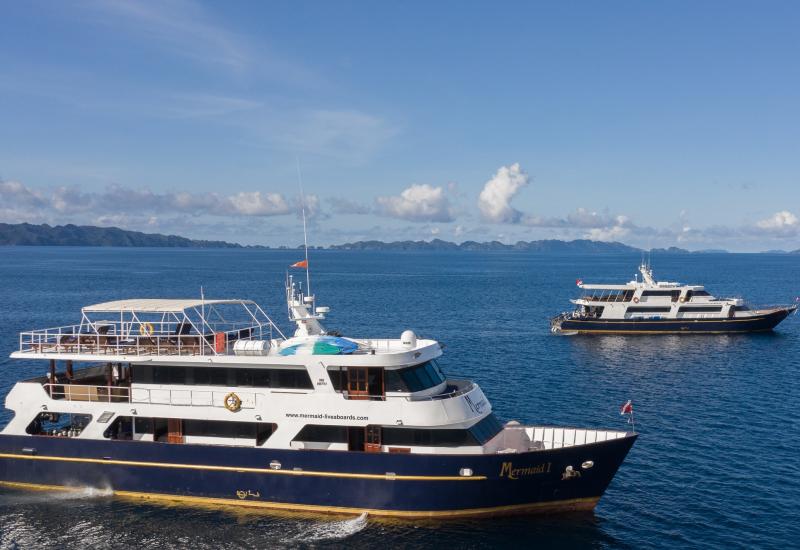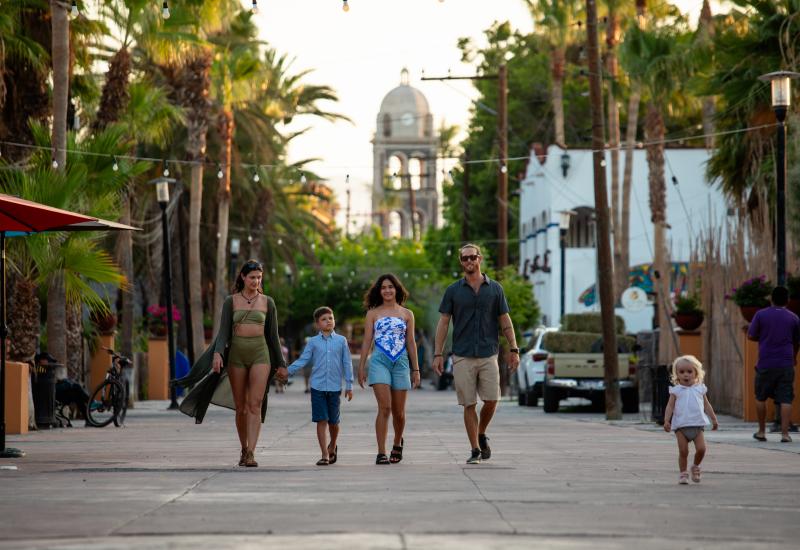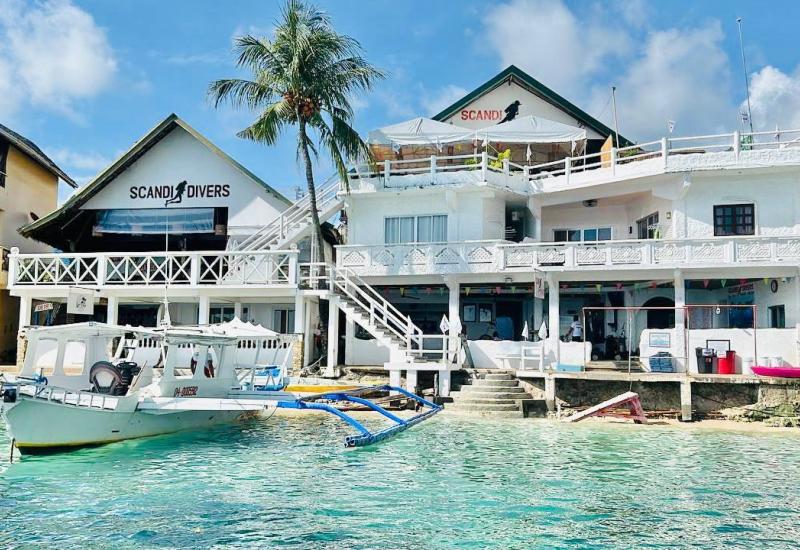Fiji In Living Color

June 2007
Text by Buck Butler
In still waters, normally brilliant colonies of Dendronephthya soft coral retract into protective, knobby fists, and a reef that's a Jolly-Rancher-colored spectacle in normal conditions becomes a mundane rockscape. But when currents push fast-moving water over a soft-coral reef, these assemblages of tiny animals unfurl their jewel-toned branches to feed on the nutrients that ride those currents. Put your mask close to a soft coral tree to find each colony of Dendronephthya plumping itself up, taking on water to filter for food until its translucent membrane practically glows. Then, for a more expansive view, move two fin-kicks away from a soft-coral-covered wall when the current is running--the stronger the better--and you will find one of the most spectacular sights under the sea.
If you want to find soft corals, pack your gear for the 300-plus islands of Fiji. And if you want to find reefs washed by swift currents and everything that means--forests of soft corals, thriving hard corals, a mind-boggling diversity of species and tornadoes of schooling fish--look at a map of Fiji and find the places where water accelerates through narrow passages with every tidal change. In that fast water, divers sometimes have to kick hard just to stay in one place, and soft-coral sites literally come to life.
Where can you find a regularly occurring perfect storm of these conditions and some of the most visually engaging reefs in the world? Fiji's Somosomo Strait and Vatu-i-Ra Passage.
Taveuni and Somosomo Strait
I have dived in ripping currents before, but I have never felt anything like this: A relentless flow threatens to dislodge my regulator as I pull myself, hand-over-hand, down the descent line at a site known as The Corner. I look up to see other divers flapping on the line like windsocks in a gale. Below me, one diver has reached the shelter of the reef and he points behind me excitedly. There's something he wants me to see, but whatever it is (a banded sea snake, I learn later) is whisked away in the fraction of a second between his pointing and my looking. Back on the boat, before we jumped into this swift water, someone asked the divemaster where we'd end up if we let go of the line.
"Australia," he said drily.
If Cozumel is Cayman on speed, then the Somosomo Strait is Cozumel on acid. Take Cayman's walls and Cozumel's currents and add outrageous psychedelic color schemes on reefs that look like they were dreamed up by a CGI animation team at Dreamworks.
The Somosomo Strait is the narrow channel that separates Fiji's second-largest island, Vanua Levu, from its third-largest, Taveuni. With every tidal change, water funneled through the strait rushes over the reefs here, feeding an outrageous variety of marine life. The back-and-forth flow creates ideal conditions for lush soft-coral growth, and the strait is world-renowned for its Rainbow Reef and sites like the Great White Wall, where Dendronephthya blankets nearly every inch of reef space.
Dive boats from the west coast of Taveuni make the short trip across the strait to sites on Rainbow Reef, which fringes the coast of Vanua Levu but is more easily accessed from Taveuni. Because of the speed and quickly changing nature of the currents here, local knowledge of dive conditions is especially crucial. As powerful as the currents can be at the surface, it's surprising that once you drop down to the reef you'll often find very little water movement at all. Still, many dives are conducted as live-boat drifts, so you won't have to find your way back to the entry point at the end of the dive.
Taveuni's natural blessings don't stop at the shoreline. The "Garden Isle" of Fiji more than lives up to its name. Frequent rains nourish the island's famed lush vegetation and magnificent waterfalls. If you love to spend the afternoon exploring rather than lying on a beach, Taveuni is your kind of place. A few of the highlights:
Waitavala Water Slide: A 25-minute hike from Waiyevo delivers you to a rushing river and a natural rocky waterslide. You're likely to find local kids playing here, and they can show you how it's done. If you decide to do the slide yourself, be prepared to bring bruised hips to the dive boat the next morning.
Tavoro Waterfalls: Bouma National Heritage Park is the crown jewel of the Garden Isle, and the most-visited features in the park are these three waterfalls. The first and most impressive of the falls is a short 10-minute hike from the visitor's center while two smaller falls require steep climbs to reach them. If you're staying on Taveuni's west coast, the drive to Bouma is more than an hour long.
Lavena Coastal Walk: Also on the east coast, this remote but well-maintained three-mile trail follows a scenic coastline before climbing through the rainforest to an impressive waterfall.
Wairiki Catholic Mission: This beautiful church in Wairiki offers stunning views over Somosomo Strait from its hillside perch. Enjoy the congregation's soul-stirring singing by attending Mass at the mission on Sunday morning.

Somosomo Dive Sites
Great White Wall: At the beginning of this world-famous dive, you'll drop down to an opening in the reef in 40 feet of water. Follow your guide inside the opening and through a spacious coral-decorated tunnel to find yourself emptied onto another world at 80 feet: A vertical wall completely covered in white soft corals. The white backdrop, often said to resemble a snow-covered ski slope, makes the vibrant colors of the resident anthias stand out. Look for lionfish and morays on the upper portions of the wall, which disappears into the depths below.
The Corner: An hour before I was here, divers had encountered a big bull shark on this site. Moorish idols, regal angelfish and lionfish adorn the reef while humphead bannerfish and humpnose bigeye bream feed in loose groups off the wall.
Small White Wall: This one is not a vertical wall, but a sloping reef that drops from 25 feet beyond 100 feet. The site is named for an overhang at 30 feet that drips with the same white soft coral found on Great White Wall. Anthias, fusiliers and chromis are here in large numbers, and on the reeftop you'll find an amazing diversity of species--nudibranchs, anemonefish, blennies and more.
Fish Factory: This wall tops out around 30 feet and, doing its name justice, produces a stellar array of marine life. Stonefish and leaf scorpionfish hide on the reef. Loose schools of longfin bannerfish pick morsels of food from the current while pyramid butterflyfish swim above the reef. Off the wall, keep an eye peeled for Spanish mackerel and trevally.
Jerry's Jelly: This classic soft-coral site bottoms out at 65 feet and offers long bottom times for photographers to take advantage of the array of colors and marine life. Schools of humphead snapper shelter in the lee of the big coral heads that top the reef here. In the sand between the coral heads, look for spotted garden eels swaying in the current.

Rakiraki, Nananu-i-Ra and Vatu-i-Ra Passage
On the three-hour drive from Nadi International Airport to the area around the village of Rakiraki, I find myself circling away from Viti Levu's main tourist areas (Nadi in the west, Coral Coast and Pacific Harbour in the south, and Suva in the southeast) and toward some of Fiji's most spectacular diving. My guide, Manoz Kumar, follows the Queen's Road through areas of the island seemingly untouched by Fiji's widespread tourism economy, through fields of sugarcane and traditional villages with hand-painted signs advertising the availability of freshly caught fish and kava.
Along the way, Manoz makes a point of describing the roadside vegetation, and it seems as though everything we pass is edible. Manoz explains which parts of each plant are eaten--leaves, stems, fruits and roots--and in a wink to the islands' cannibalistic past, he tells me, "Fijians eat everything but the tourists!"
Off this coast lies the Bligh Water, a swath of ocean bounded by Fiji's two largest islands, Viti Levu and Vanua Levu. The passage takes its name from its most renowned traveler, Capt. William Bligh, who found his way through Fiji's reef-riddled shallows in his small boat after he was mutinied off the HMS Bounty in 1789. Today, it's divers who navigate their way to the Bligh Water to explore its current-swept sites.
Some of the swiftest currents and lushest reefs can be found in the narrow Vatu-i-Ra Passage, where soft corals cling to pinnacles that reach toward the surface. Sites in the Vatu-i-Ra Passage are also covered with a kaleidoscopic array of hard corals, crinoids, anemones and seafans. Schooling surgeonfish, fusiliers, barracuda and trevally circle the seamounts while sharks patrol their blue perimeters. A constant presence on these reefs are clouds of anthias moving frenetically just above the corals. These loose collectives seem to be as organized as mosh pits, but each is actually comprised of several small "harems" with a strict social order that includes a dominant male, a few lesser males and a cluster of females and juveniles.
Divers reach sites in the Vatu-i-Ra Passage either of two ways: By diving with a land-based operation in the Rakiraki area or on one of the live-aboard dive boats that make this area a regular stop on their itineraries. From the Rakiraki area, the boat ride to Vatu-i-Ra is 45 minutes and is weather-dependent. Because of the longish transit times, the standard drill on Vatu-i-Ra trips is to make three dives instead of two and to eat lunch on the boat between the second and third dive.
Kai Viti Divers is based at Wananavu Resort, a convenient full-service resort near Rakiraki. If you're looking to get away from it all, the little island of Nananu-i-Ra, a short boat ride offshore, offers more accommodations options, including Nananu Beach & Dive Resort (formerly Bamboo Beach Resort). Nananu-i-Ra is a toy-sized version of the South Pacific idyll, a great place to while away post-dive afternoons by snorkeling, kayaking or hiking its grassy hills to enjoy panoramic views.

Rakiraki Dive Sites
Black Magic Mountain: This stunning coral pinnacle is named for the healthy black coral bushes that sprout from its sides. The big bommie rises from 100 feet to within 20 feet of the surface and features abundant soft corals, thanks to swift currents that wash over the site. Schools of surgeonfish, unicornfish and fusiliers swirl around the seamount while gray reef sharks cruise in from the blue.
G6: A field of brain and staghorn coral tops this pinnacle at 20 feet, which features a canyon running through the middle of it. On all sides, walls drop off precipitously, covered with soft corals. Moorish idols, big emperor and semicircle angelfish, parrotfish and butterflyfish stick close to the reef while schools of barracuda circle slowly from a distance.
Instant Replay: Swim along this sloping wall until it culminates in a point, then swing around to the back of the reef until you reach a canyon cut through the reef. Follow the canyon back to the front of the reef and start over. That's the Instant Replay. Along the way, you'll swim past lush bouquets of golden soft corals. Look for lionfish and triggerfish on the reef and trevally and white-tip reef sharks alongside it.
Wheat Fields: This site is aptly named, thanks to amber waves of Sinularia soft corals that top the first of twin bommies at the site, waving in unison with the surge. White-tip reef sharks prowl around the pinnacles while lobsters and morays hide in crevices on the reef.
Thakau Vatu Latha Reef: This reef system is closer to the Rakiraki/Nananu-i-Ra area (just a 10-minute boat ride) than the Vatu-i-Ra Passage sites and offers many of the same attractions. This is effectively the house reef of Kai Viti Divers, which splits time between Thakau Vatu Latha and the sites at Vatu-i-Ra. Sites here include Breath Taker, Dream Maker and Wananavu Sunrise, where soft corals, especially the golden variety, grow thick.

Kava Done Right
In many ways, kava is the lifeblood of Fijian society. Made from the ground root of the yaqona plant, the mildly narcotic, mud-colored earthy drink is enjoyed in ceremonies as well as casually nearly everywhere you go in the country. Don't miss the chance to participate in at least one kava ceremony when you're in Fiji. Here's how to do it right:
Step 1: Participants sit cross-legged in a circle on a large woven mat with the kava mixer and server positioned behind the tanoa, the wooden bowl used for mixing. Attached to the tanoa is the magimagi, a coconut-fiber rope tied to a cowrie shell that traditionally points to the highest-ranking chief in the circle.
Step 2: The mixer places the ground root into a cloth and submerges it in the water in the tanoa, straining the water through cloth until the liquid reaches the desired strength.
Step 3: The server scoops kava into a bilo, a half-coconut-shell drinking vessel and passes it to the first person in the circle. Before accepting the bilo, the drinker claps once and says "Bula!"
Step 4: As the first person drinks, draining the bilo without pausing, others in the circle clap three times. These claps should be made with cupped hands to produce a deep "pop."
Step 5: Once the drinker drains the bilo, he claps again and passes the bilo back to the server to refill for the next person.
Step 6: After the bilo has made its way around the circle, the ceremony will stop for some traditional Fijian songs, often accompanied by guitar and ukelele, until it's decided that it's time for another round, when the drinking begins again. Kava ceremonies can go on for hours. It is not rude to excuse yourself once you've had your fill.
Tip: Drink as much or as little kava as you like, but don't pass up the first bilo. You can request the shell be filled to the top ("high tide") or halfway ("low tide").
What About the Coup?
Change seems to be the only constant in Fijian government. There have been four coups since 1987, the most recent taking place in December 2006 when military leader Frank Bainimarama seized power. Bainimarama has been condemned in the international community for refusing to hold democratic elections before 2010. Reports suggest that Fiji's tourism industry has suffered following the coup. Most visitors, however, will see no evidence of political unrest, especially in the main tourist areas. As with all international destinations, you can check for current travel warnings on the U.S. State Department's web site at http://travel.state.gov.
Recommended Viewing
For a unique look at life on Taveuni, rent the DVD of the 2005 documentary Reel Paradise, which tells the story of American indie-film maven John Pierson, who moves to the island for a year with his wife and two kids. Pierson re-opens the 180 Meridian Cinema in the village of Wairiki to show movies (everything from the Three Stooges and Jackass to Apocalypse Now Redux and Rabbit-Proof Fence) to the local populace at no cost. At the end of his family's stay on the island, a film crew comes to document the final days of Pierson's pet project and the result is an engaging look at life on Taveuni and the Pierson family's sometimes frustrating, but ultimately enlightening interaction with Fijian culture.

InDepth
Getting There: Nonstop flights to Nadi (NAN) on the main island of Viti Levu originate in Los Angeles and are about 11 hours in duration. From the Nadi airport, the Rakiraki area is about a three-hour drive. If you're staying on Nananu-i-Ra, you'll make the short transfer to the island by boat from the Ellington Wharf near Rakiraki. To reach Taveuni, you'll catch a domestic flight from the Nadi airport.
Water Conditions: Pack a safety sausage in your dive bag--Fiji has major-league currents that occur during tidal changes. Water temps can drop to 75 degrees. During the rainy season, water temps can climb into the low 80s.
Weather: Weather conditions can vary considerably by island region, but generally, winter (June through October) is the best time to visit--it's drier, cooler and far less humid than the rest of the year. Winter air temps range from the 70s to the 80s. During the December-through-March rainy season, temps are a bit higher, ranging from the upper 80s to the mid-90s.
Entry Documents: U.S. and Canadian citizens need a passport valid for more than three months from their date of entry, plus a return or ongoing ticket. Visas are granted at the airport on arrival for a stay of four months.
Money Matters: The Fijian dollar is the unit of currency. At press time, US$1 was worth about F$1.64. Credit cards are accepted at larger hotels and resorts.
Language: The three official languages of Fiji are English, Bau Fijian and Hindustani. English is spoken by nearly everyone in the islands.
Electricity: 240 volts, with three-pronged Australian-type outlets. Some resorts and live-aboards supply 110 voltage or provide converters.
Just In Case: A recompression chamber is located in Suva.
For More Information: For a list of dive operators and live-aboards in Fiji, plus comprehensive travel guides, special dive deals and recent trip reports submitted by members, go to our Travel section.
Tourism: Fiji Visitors Bureau, web: www.bulafiji.com.










